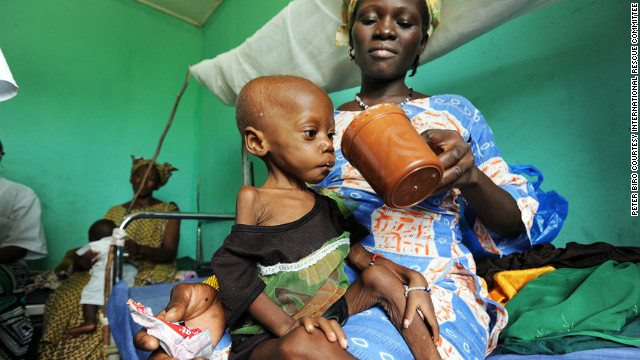The increase in global food prices may have for the time being caught up but food is expected to remain at record price levels for the foreseeable future. Industrial agriculture’s chickens have come home to roost. But the price is being paid not by agribusiness and food retailers but by small farmers whose income remains low, and by the millions being pushed into malnutrition.
Nothing can explain this strange and criminal paradox of plenty. More than 45 years after the Green Revolution India provides a unique presence of overflowing godowns and rotting grains on the one hand while millions go to bed hungry. Having the largest population of hungry in the world, India ranks 66 among 105 countries in the 2012 Global Hunger Index. That too at a time when there is no shortage of food within the country.
The World Bank Group is helping countries increase food security through our support for farmers and agriculture, safety nets and nutrition, infrastructure development, and building resilience to climate change. India has the largest population of hungry in the world at a time when there is no shortage of food within the country. It is time the government affords priority to food storage and distribution
Hunger is a term which has three meanings -the uneasy or painful sensation caused by want of food; craving appetite. Also the exhausted condition caused by want of food.
- the want or scarcity of food in a country
- a strong desire or craving
The United Nations Food and Agriculture Organization estimates that nearly 870 million people of the 7.1 billion people in the world, or one in eight, were suffering from chronic undernourishment in 2010-2012. Almost all the hungry people, 852 million, live in developing countries, representing 15 percent of the population of developing counties. There are 16 million people undernourished in developed countries, the number of undernourished people decreased nearly 30 percent in Asia and the Pacific, from 739 million to 563 million, largely due to socio-economic progress in many countries in the region. The prevalence of undernourishment in the region decreased from 23.7 percent to 13.9 percent.
Causes?
Poverty is the primary cause of hunger. The causes of poverty include poor people’s lack of resources, an extremely unequal income distribution in the world and within specific countries, conflict, and hunger itself. Progress in poverty reduction has been concentrated in Asia, and especially, East Asia, with the major improvement occurring in China. In Sub-Saharan Africa, the number of people in extreme poverty has increased. The statement that ‘poverty is the principal cause of hunger’ is, though correct, unsatisfying.
Destructive economic systems: the principal underlying cause of poverty and hunger is the ordinary operation of the economic and political systems in the world. Essentially control over resources and income is based on political and economic power that typically ends up in the hands of a minority, who live well, while those at the bottom barely survive, if they do.
Hunger is also a cause of poverty, and thus of hunger: By causing poor health, low levels of energy, and even mental impairment, hunger can lead to even greater poverty by reducing people’s ability to work and learn, thus leading to even greater hunger.
Climate change: Climate change is increasingly viewed as a current and future cause of hunger and poverty. Increasing drought, flooding, and changing climatic patterns requiring a shift in crops and farming practices that may not be easily accomplished are three key issues.
– Amey Khedekar.







12 Comments